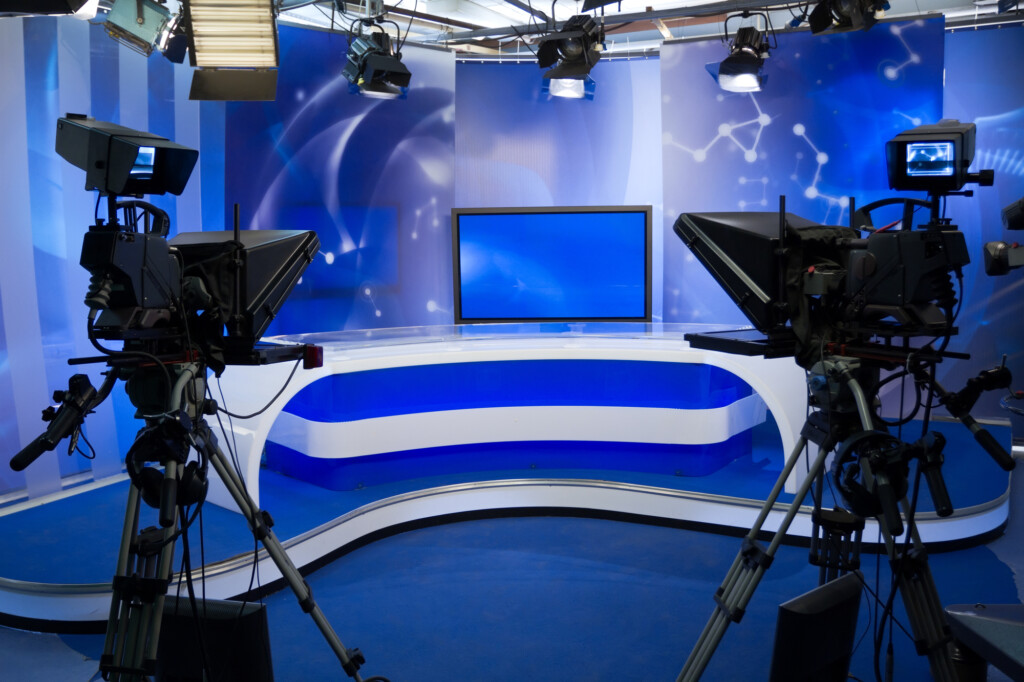Creating the atmosphere in broadcast studios is crucial. It not only sets the tone for your show but also plays a vital role in effectively conveying your message to viewers. While many aspects contribute to this, one element that often goes unnoticed but is incredibly important is on-air lighting. The right lighting can enhance the set, improve visuals, and create an atmosphere for your audience.
1. Recognizing the Significance of On-Air Lighting
On-air lighting isn’t just radio station equipment that illuminates the set; it greatly influences how your audience perceives your content. It sets the mood, draws attention to areas, highlights props or guests, and ultimately enhances the television experience.
By choosing on-air lights, you can maintain consistency throughout segments of your shows while appropriately emphasizing different subjects.
2. Types of On-Air Lights
a) Key Lights:
Key lights serve as the source of light in a broadcast studio. They provide illumination across the set and ensure that everyone appearing on camera is well-lit. These lights should be positioned correctly to avoid shadows or unwanted glare.
b) Fill Lights:
To soften the shadows caused by the harshness of lights, fill lights are used. They help balance the intensity of light and enhance depth perception when filming.
c) Accent Lights:
Accent lights are utilized to create a captivating ambiance in your studio by highlighting elements like artwork or props in your design. These subtle touches make the environment visually appealing. Keep viewers engaged.
d) Backlights:
Placed behind subjects or objects, backlights create a glow around their edges, effectively separating them from the background. This technique enhances depth perception and adds three qualities to images.
e) Color Adjustable Lights:
For flexibility in design choices, consider using LED lights that allow you to adjust the color tone according to your content requirements. This feature is especially useful for creating settings or adjusting ambiance as needed.
3. Choosing the Right On Air Lights
a) Energy Efficiency:
To minimize power consumption and reduce heat generation, it is advisable to opt for energy lighting options. LED lights have become an industry-standard in studio lighting due to their power consumption, lifespan, and ability to adjust colors flexibly.
b) Color Rendering Index (CRI):
The Color Rendering Index measures how accurately a light source represents colors in comparison to light. Having a higher CRI is important for achieving color reproduction, which is crucial for maintaining high-quality visuals.
c) Adjustable Brightness:
Make sure your on-air lights have the ability to adjust brightness so you can adapt to lighting conditions. Meet specific aesthetic requirements during different parts of your show.
d) Heat Management:
managing heat is essential when selecting on-air lights, as excessive heat can be detrimental and uncomfortable for both talent and equipment. Look for lights that come with cooling systems and produce heat output to ensure optimal safety and comfort throughout filming.
4. Working with Experts
While it may be tempting to design your lighting setup, it is highly recommended that you seek advice from experts who specialize in broadcast studio lighting installations. They possess knowledge about lighting fixtures, understand the technical aspects involved, and can assist you in creating a customized setup that best fits your specific needs.
Collaborating with professionals not only guarantees results but also allows you to benefit from their expertise in terms of cost-effectiveness, efficiency, and innovative solutions based on your budgetary constraints.
In summary, the choice of on-air lights is extremely important in creating a television experience for your audience. It’s crucial to consider various factors like lights, fill lights, accent lights, backlights, color adjustable lights, energy efficiency, color rendering index (CRI) adjustable brightness controls, and heat management. These considerations can greatly enhance the appeal of your broadcast set. For the outcome, it’s advisable to consult with experts who specialize in broadcast studio lighting installations. They will assist you in making sure that your lighting setup aligns with your brand’s vision while providing viewers with an experience.
Photo Credit: DepositPhotos.com




